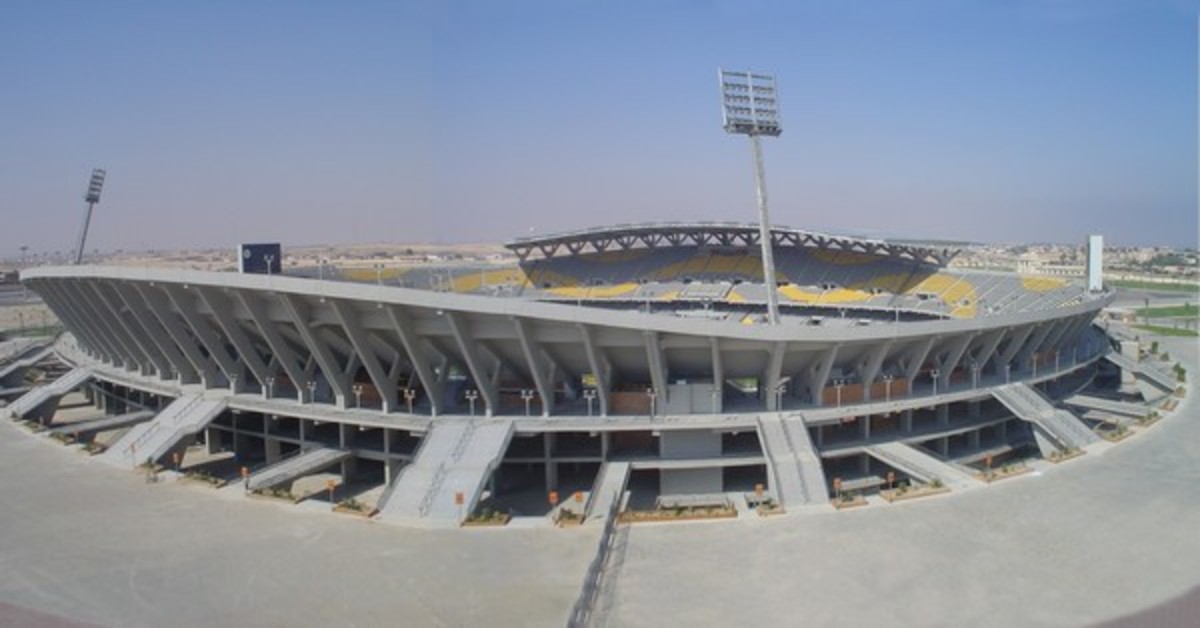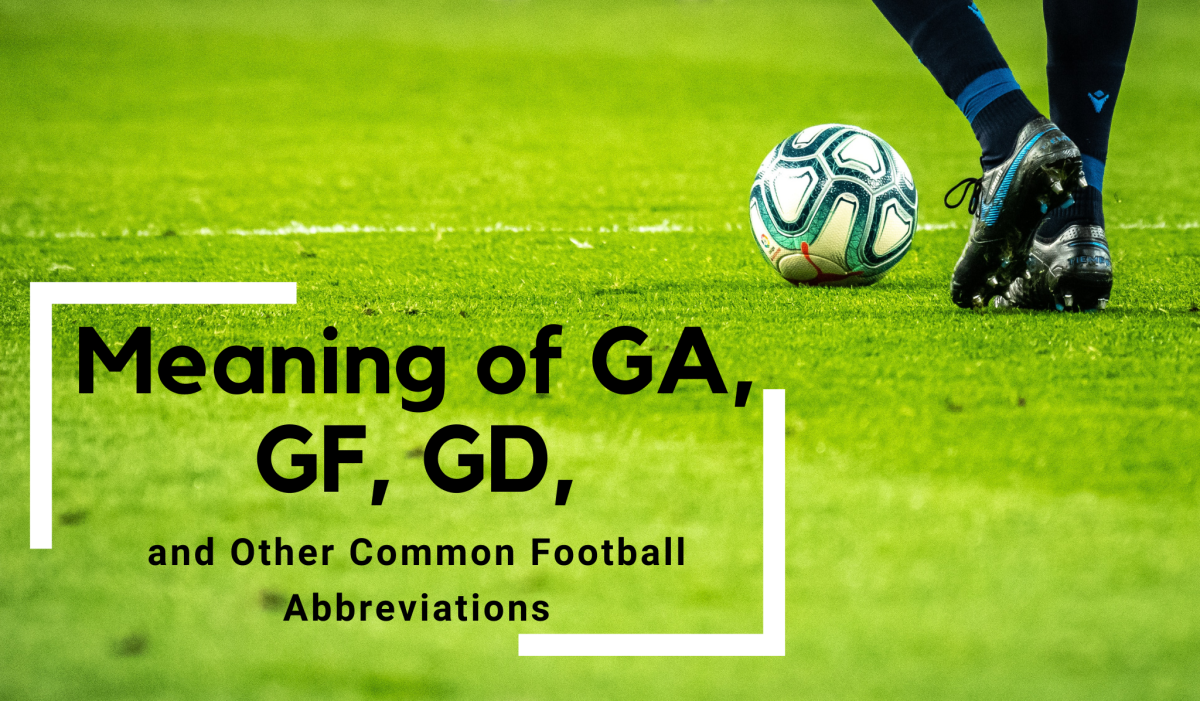Turkish Football Debt Crisis
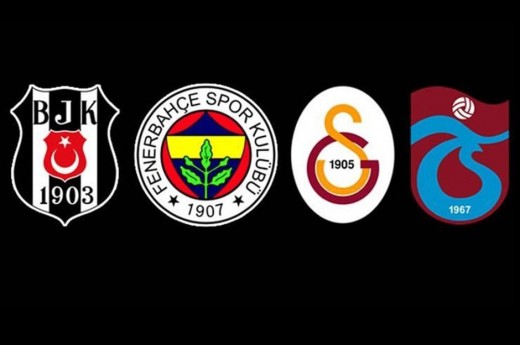
Four of Turkey’s biggest football teams have reached record highs with the amount of debt they are accumulated over the years.
The total debt of Fenerbahçe, Galatasaray, Beşiktaş, and Trabzonspor reached almost 10 billion Turkish Liras.
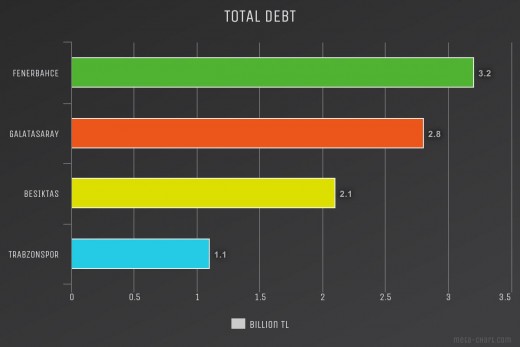
Fenerbahçe are drowning in debt
The current debt champions, Fenerbahçe, recently announced that the club’s debts have far exceeded the previously disclosed figures, reaching a staggering 3.2 billion Turkish lira (621 million euros).
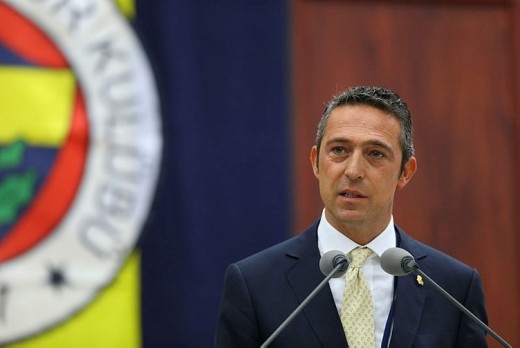
Ali Koc, the newly elected president of the club said:
“The debt had been disclosed as 400 million euros. As of May 31, our total debt is actually 621 million euros. The largest part of that is financial debt. There are also debts in our sporting activities, and to the state,”
during a Q&A on Fenerbahce’s television channel, FBTV.
The club’s primary incomes are ticket sales, corporate boxes, season tickets, television revenues, and competitions. However, nearly all of these revenue streams have been tied up for years.
It also should be stated that Fenerbahçe has also been involved in the 2011 Turkish Sports corruption scandal, leading to a ban from European competitions in the following season and cutting off significant revenue.
Galatasaray
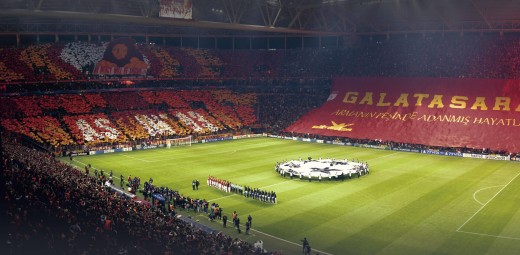
The current Turkish League champions Galatasaray revealed that the club's total debt is 2.8 billion Turkish Lira.
In 2016 Galatasaray were hit with a 1+1 year ban for failing to meet UEFA's FFP requirements.
In June 2018, the club was fined 6 million euros for not complying with UEFA's breakeven requirement and a new agreement was made between UEFA and Galatasaray.
Under the new agreement, the club will have a maximum deficit of 20 million euros in 2019 and 10 million euros in 2020. The club will need to reach full breakeven compliance by 2021-2022.
The club will have to pay an additional 9 million euro fine if it fails to meet the requirement of the new agreement.
Beşiktaş

In 3rd place in the debt league, Beşiktaş has reported total debt of 2.1 billion Turkish Lira.
Under the leadership of Fikret Orman, current club president, the club has gone through a significant change. The club won back to back titles and reached the Round of 16 in the UEFA champions league.
The club has employed a strict transfer policy, resulting in almost 480 million Turkish Lire. The biggest of which has been the sale of Cenk Tosun to Everton for 22.5 million euros in 2017.
How Did This Happen?
Years of mismanagement with high transfer fees and ridiculous wages have been the main driving forces for the ever-rising debt.
Recently the fall of the Turkish Lira against the Euro has made the situation much worst.
Clubs in Turkey make the majority of their income via Turkish Lira but pay transfer fees and wages (the main expenditure) in Euros.
This table shows an example of a player that has signed a 2.5 million euros a year contract and the amount the club has to pay in Turkish Lira over the period of the contract:
Year
| Euro (million)
| Turkish Lira (million)
|
|---|---|---|
2016
| 2.5
| 8.2
|
2017
| 2.5
| 10.3
|
2018
| 2.5
| 14.1
|
The cost of the said contract to the club at the time of signing would have been around 24.6 million Turkish Lira, but due to the fall of the Turkish Lira, the contract would now cost the club 32.6 million Turkish Lira.
That’s a 32% increase.
Considering that most of the contracts in the clubs are similar to this, it is not difficult to understand why club debt has risen to record levels.
Unique Problem to Turkey
Most foreigners don't know about Turkish clubs because they are not exclusively football clubs, but instead, they are sports clubs.
The three most prominent clubs in Turkey (Galatasaray, Fenerbahce, and Besiktas) also compete in various other sports, such as basketball, volleyball, and athletics.
These other sports branches on their own don't make enough revenue to sport themselves, and this means that the clubs have to fund the various branches with their earnings from football.
UEFA Financial Fair Play (FFP) Rule
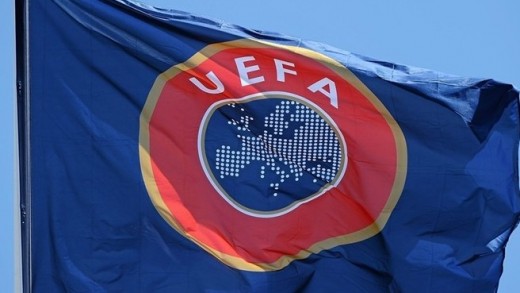
Due to UEFA's Financial Fair Play (FFP) rules, all clubs have no choice but to improve. Otherwise, they risk fines and even bans from all UEFA competitions.
UEFA competitions, specifically the UEFA Champions League, offers the clubs a significant revenue source. Once qualified, a club could expect a minimum of 20-30 million Euros of revenue from the competition. Any ban from the competition will likely lead to the worsting of a club's financial problems.
How to Balance the Books
There are a number of ways the clubs can improve their balance sheets.
- Make contracts in Turkish Lira instead of Euros
- Have a fixed exchange rate in the contract
- Increase sponsorship money
- Sale of players
- Have a tighter grip of transfer and contract negations
Update: U.S. Tariffs Effect on Football
With the recent introduction of steel tariffs by the United States President Donald Trump, the Turkish lira has accelerated its decline against the major currencies.
1 euro was at one point equalled to 8TL. Using the example above, a player on a 2.5 million euro contract would now cost 20 million TL.
However, recently the Turkish lira has made some small gain and at the time of writing 1 euro equalled 7TL.
Updated: Turkish Lira Continues to Fall
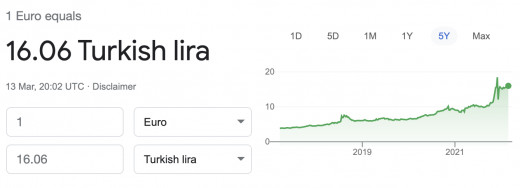
The Turkish Lira has continued to decline, and one euro now equals around 16 Turkish Lira.
Luckily the clubs were able to swap most of their Euro debt into Turkish Lira, giving a bit of relief as the TL continues to devalue.
© 2018 Deniz Burunlu


